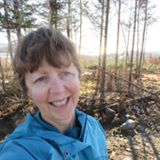Making Choices
Typically, when people decide to simplify life and reduce the stuff, there are some things that are an easy decision; the choice to ‘Keep’ or ‘Not Keep’ is simple.
If that is the case, take immediate action. If you don’t want to keep an object, take the next step NOW and pat yourself on the back for successfully beginning your minimizing journey.
If, however, the choice is more difficult, it requires more analysis to make the decision. While it may be tempting to put the item back in the box, closet or garage, DO NOT GIVE UP just yet. Most frequently, when people are challenged by this choice, it is because there is an associated memory that they fear losing. Sometimes, however, with a few more questions, it becomes clear that the is NOT a story that will be lost, making it easier to let the object go.
IS there a story here?
This exercised is designed to help you to determine if, in fact, the object you are considering
has a story that must be captured before you are able to let it go.
A more detailed discussion follows the diagram.
Should I keep this object?
- YES – keep the object but do not put back in box or closet. Decide to use or display.
- NO – release the object and sell, donate, recycle, trash (trash is ALWAYS my last option and only if there is no other use AND, if I decide it is necessary to trash, I first reclaim anything that can be used by me or others)
- UNDECIDED – move to the next question
Does object bring me joy, calm, inspiration…?
- YES – that can be enough of a reason to keep in your home and have it on display – it does not need more of a story than that
- NO – move to the next question
Does object have stories I want to keep?
- YES – Record a brief description and a list of the points that you want to remember about this object or any connected people and/or events. Try to do this quickly. At this point, you are not attempting to tell the full story, just to ensure that you have the details you fear loosing. (if this step takes too much time, it becomes a distraction from the objective of clearing some things. Save the editing and expanded details for another session.) I also recommend attaching a picture or sketch. Collect these descriptions in a notebook or on index cards in a box or pages in folders in hardcopy or digital format. Having them in a common place will make it easier to track and more likely that you will look at an review stories. It also makes it easier if you decide that you want to expand on any of the stories in a different format.
- NO – release the object
Do I want/need to do more with the story?
- YES – move to next question
- NO – release the object
Do I NEED the object to tell more of the story?
(in other words, is the object itself the story or part of the story)
- YES – move to next question
- NO – release the object
- UNDECIDED – If after going through this exercise, you are still uncertain about keeping an object, you still want to resist putting it back where it was. Instead, have a designated holding zone where you will keep something for a set amount of time (this should be a strict timeline, usually between 2 weeks and 6 months is enough time for most items – some seasonal items might require longer). Also, identify any other criteria that might help you make a decision – like taking more detailed pictures, checking with other people who might have the same associations, or not using the item for a definited period of time.
NOTE: It can be difficult to be objective about this question. Remember that if you have made it this far in the exercise, you have already identified that the object is not bringing positive energy to you or your surroundings and you have recorded the basic details of the item and its associations.
Next steps
If you want to tell more of a story, you will need to decide the format, perhaps the audience (just for yourself? to share with family and friends? To publish – fiction or non-fiction?) – and more.
If you decide to release, you will need to make a decision about how to do that, and parameters around the decision. For example, make a pledge like this: “I will post this object for sale for 3 weeks. I will price it at $__ and go as low as $__. If it does not sell in that time, I will donate it to_____.”
Whether you decide to keep or release the object, take the next step immediately. That might be as simple as putting it in one of three boxes (or labelling it): KEEP – RELEASE – DEFER
Keep in mind the guidelines for these decisions, as discussed in previous sections.
I hope that this exercise will give you some direction in choosing things that you can let go, while still keeping the stories.
Do you have other questions or processes that you use when making this decision. Please share in the comments.
Featured image by cottonbro from Pexels



such a simple concept, and so beautifully explained.. Keep the stories, Yes!!
Thank you for your comment. I appreciate your feedback.